-
 Bitcoin
Bitcoin $105,734.0170
-1.51% -
 Ethereum
Ethereum $2,414.7328
-3.26% -
 Tether USDt
Tether USDt $1.0002
0.00% -
 XRP
XRP $2.1748
-2.62% -
 BNB
BNB $647.5663
-1.72% -
 Solana
Solana $148.1710
-3.81% -
 USDC
USDC $0.9999
-0.01% -
 TRON
TRON $0.2799
-0.02% -
 Dogecoin
Dogecoin $0.1586
-4.17% -
 Cardano
Cardano $0.5440
-5.03% -
 Hyperliquid
Hyperliquid $37.0680
-6.59% -
 Bitcoin Cash
Bitcoin Cash $501.2052
-4.01% -
 Sui
Sui $2.6846
-3.47% -
 Chainlink
Chainlink $12.8488
-3.38% -
 UNUS SED LEO
UNUS SED LEO $8.9480
-1.51% -
 Avalanche
Avalanche $17.2059
-3.87% -
 Stellar
Stellar $0.2270
-4.75% -
 Toncoin
Toncoin $2.7889
-3.93% -
 Shiba Inu
Shiba Inu $0.0...01126
-1.76% -
 Litecoin
Litecoin $83.6893
-3.36% -
 Hedera
Hedera $0.1445
-4.49% -
 Monero
Monero $312.4014
-2.58% -
 Dai
Dai $1.0000
0.00% -
 Ethena USDe
Ethena USDe $1.0001
-0.01% -
 Polkadot
Polkadot $3.2920
-3.32% -
 Bitget Token
Bitget Token $4.4629
-1.81% -
 Uniswap
Uniswap $6.5386
-8.42% -
 Aave
Aave $260.3780
-6.01% -
 Pepe
Pepe $0.0...09308
-4.54% -
 Pi
Pi $0.4864
-3.04%
What does "signature request" mean in MetaMask?
!!!!
Jul 02, 2025 at 12:01 am
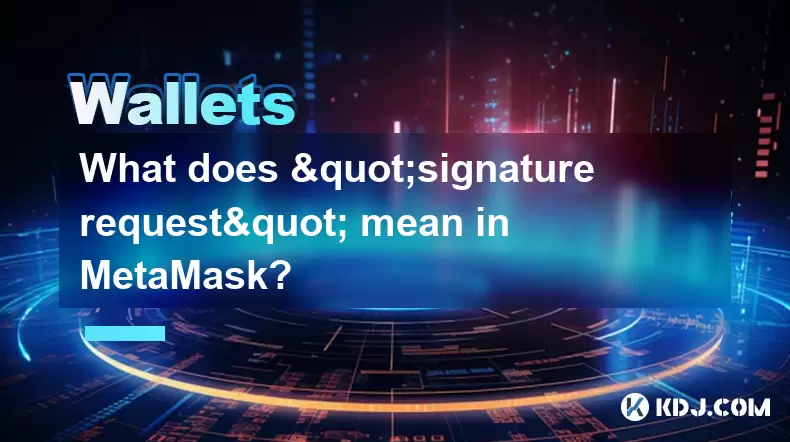
Understanding the Concept of "Signature Request" in MetaMask
When using MetaMask, users frequently encounter prompts labeled as "signature request". This feature plays a critical role in how Ethereum-based applications interact with your wallet. A signature request is essentially a method used by decentralized applications (dApps) to verify that you are the legitimate owner of a wallet address without exposing your private keys. It serves both authentication and authorization purposes, ensuring secure interaction within the blockchain ecosystem.
What does it mean when MetaMask asks for a signature? It means a dApp or service wants to confirm your identity or obtain permission to perform certain actions on your behalf, such as approving token transfers or participating in governance votes.
How Signature Requests Work Technically
Every time a signature request appears in MetaMask, it involves cryptographic signing of a message or transaction data. Unlike regular transactions that consume gas, these requests do not alter the blockchain state but are crucial for verifying user intent.
Here’s a breakdown of the process:
- The dApp generates a message containing specific data.
- MetaMask presents this message to the user.
- The user reviews and approves the message using their private key.
- MetaMask signs the message cryptographically and returns it to the dApp.
Why doesn’t this cost gas? Because no transaction is executed on the blockchain—only a cryptographic signature is generated.
Different Types of Signature Requests
There are several types of signature requests you may encounter while using MetaMask:
- Personal Sign: Used for general-purpose signing of arbitrary messages, often for login purposes.
- Typed Data Sign: Structured signing where the message includes typed fields like strings, numbers, and arrays. Commonly used for off-chain approvals in DeFi protocols.
- Transaction Sign: Required before submitting an actual blockchain transaction; confirms the sender's intent to execute a transfer or smart contract function.
Each type has its own format and use case. For example, typed data signatures are more readable and structured compared to personal signatures, which appear as raw hex data.
How to Safely Handle Signature Requests
It's vital to treat every signature request with caution. Here’s how to ensure safety:
- Always read the content of the message being signed, even if it looks technical.
- Be wary of any request asking you to sign a blank or unclear message.
- Never sign anything that mentions transferring funds unless you fully understand the context.
- Use browser extensions like Blockaid or Revoke.cash to detect malicious requests.
- Keep your recovery phrase secure and never share it under any circumstances.
If a signature request seems suspicious or too vague, it's better to deny it and reach out to the dApp's support team for clarification.
Use Cases for Signature Requests in DeFi and Web3
Signature requests are widely used across the decentralized finance (DeFi) and Web3 space. Some common applications include:
- Gasless Transactions: Platforms like OpenSea use signature requests to allow users to list NFTs without paying gas fees upfront.
- Token Approvals: Protocols like Uniswap use them to approve token spending limits without executing multiple on-chain transactions.
- Governance Voting: Projects often require users to sign their votes off-chain before tallying them on-chain.
- Authentication: Many dApps use signature requests instead of traditional login systems to authenticate users securely.
These use cases illustrate how signature requests streamline interactions while preserving security and reducing costs for users.
Frequently Asked Questions (FAQ)
1. Can I undo a signature after approving it in MetaMask?
No, once a signature is approved, it cannot be undone. However, since signatures don't change blockchain state directly, they only become effective if used by the dApp in a subsequent action.
2. Why do some signature requests look like gibberish?
Some signature requests display as hexadecimal because they're using the personal_sign method. Others, especially those using EIP-712, show human-readable data structures for better transparency.
3. Are all signature requests safe?
Not necessarily. While most are benign, malicious actors can exploit signature requests to gain unauthorized access or initiate fund transfers through phishing attacks. Always review what you're signing.
4. What happens if I lose my MetaMask seed phrase after signing something?
The signature itself doesn’t store your seed phrase. However, without your recovery phrase, you won’t be able to regain access to your wallet or reverse any signed actions tied to it.
Disclaimer:info@kdj.com
The information provided is not trading advice. kdj.com does not assume any responsibility for any investments made based on the information provided in this article. Cryptocurrencies are highly volatile and it is highly recommended that you invest with caution after thorough research!
If you believe that the content used on this website infringes your copyright, please contact us immediately (info@kdj.com) and we will delete it promptly.
- Bitget Wallet's Fomo Thursdays: Big Wins and a 20% Winners Rate!
- 2025-07-02 16:50:12
- MAGACOIN FINANCE: The Altcoin Presale Turning Heads in the Crypto Scene
- 2025-07-02 16:55:12
- XRP, Escrow, and Token Management: A Deep Dive into Ripple's Strategy
- 2025-07-02 17:10:14
- Neo Pepe Ignites Crypto Rally: Analyst Predictions & The Memetrix Revolution
- 2025-07-02 17:15:12
- Dogecoin, Price Prediction, and Retail FOMO: What's the Hype?
- 2025-07-02 17:20:12
- Toncoin's Tightrope Walk: Chart Analysis and Bounce Potential
- 2025-07-02 17:50:17
Related knowledge
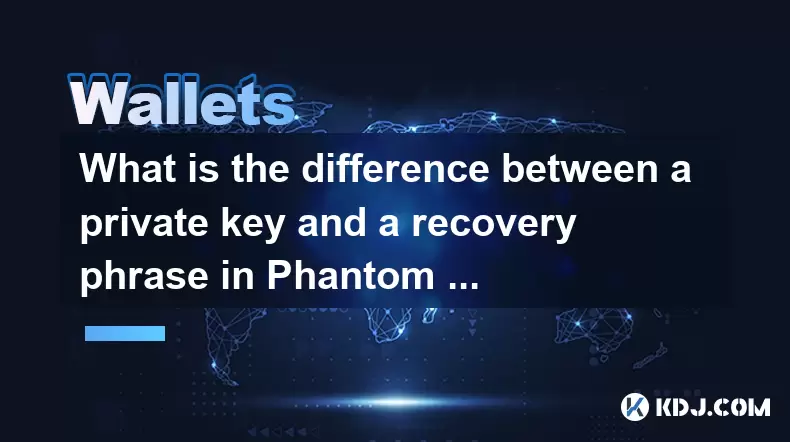
What is the difference between a private key and a recovery phrase in Phantom wallet?
Jul 02,2025 at 09:57am
Understanding the Basics of Phantom WalletPhantom wallet is a non-custodial digital wallet primarily used for interacting with the Solana blockchain. It allows users to store, send, and receive SOL tokens and other digital assets like NFTs. Non-custodial means that the user retains full control over their private keys and recovery phrases. Understanding...
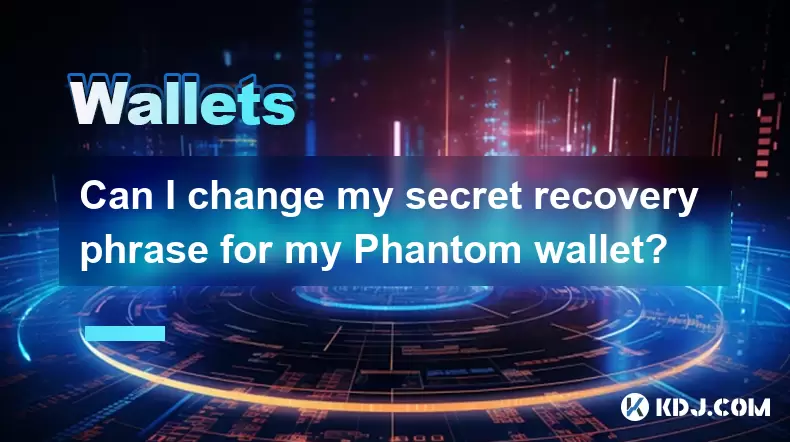
Can I change my secret recovery phrase for my Phantom wallet?
Jul 02,2025 at 12:07pm
Understanding the Role of a Secret Recovery PhraseThe secret recovery phrase, often referred to as a seed phrase, is a critical component in managing cryptocurrency wallets like Phantom. It serves as a backup mechanism that allows users to recover their wallet and associated assets if they lose access to their device or password. Typically, this phrase ...
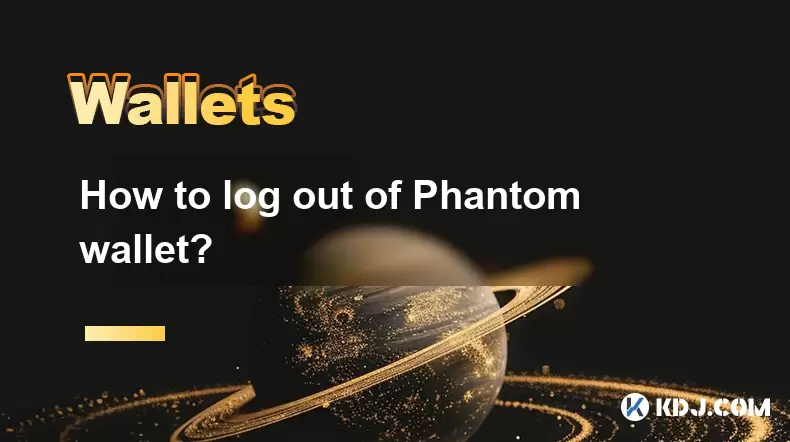
How to log out of Phantom wallet?
Jul 02,2025 at 05:28pm
What Is Phantom Wallet?Phantom wallet is a popular non-custodial cryptocurrency wallet designed primarily for the Solana blockchain, offering users the ability to store, send, and receive SOL and SPL tokens. It also supports integration with decentralized applications (dApps) and allows users to participate in staking, governance, and NFT trading. Being...
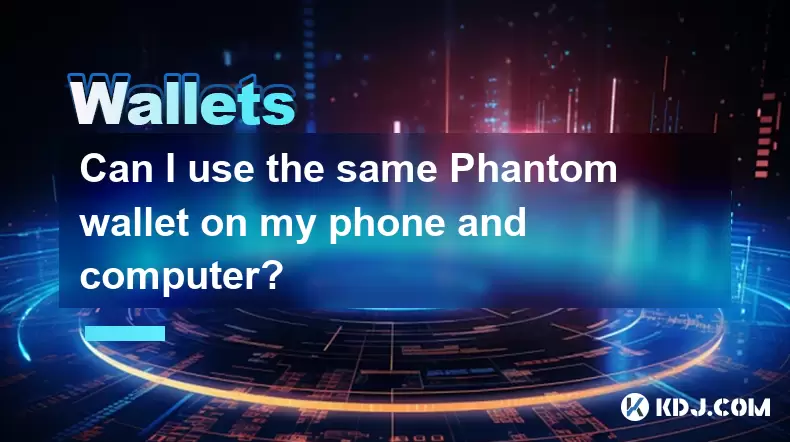
Can I use the same Phantom wallet on my phone and computer?
Jul 02,2025 at 10:04am
Phantom Wallet: Cross-Device CompatibilityPhantom wallet is a non-custodial cryptocurrency wallet designed primarily for interacting with the Solana blockchain. It supports both browser extensions and mobile applications, making it versatile for users who want to manage their digital assets across multiple devices. One of the most common questions among...
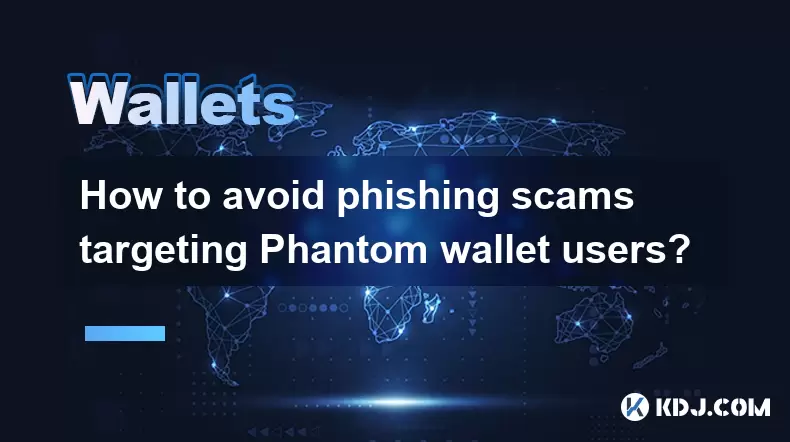
How to avoid phishing scams targeting Phantom wallet users?
Jul 02,2025 at 06:42pm
What is a phishing scam in the context of Phantom wallet?A phishing scam is a type of cyberattack where malicious actors attempt to deceive users into revealing sensitive information such as private keys, seed phrases, or login credentials. In the case of Phantom wallet, which is a popular non-custodial wallet for Solana-based assets, attackers often us...
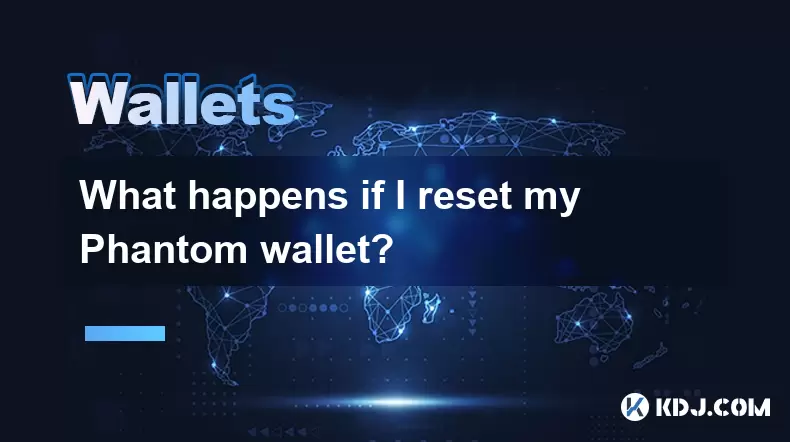
What happens if I reset my Phantom wallet?
Jul 02,2025 at 12:42pm
What Happens If I Reset My Phantom Wallet?Phantom wallet is one of the most popular cryptocurrency wallets used for interacting with the Solana blockchain. It allows users to store, send, receive, and stake SOL tokens, as well as interact with decentralized applications (dApps). However, situations may arise where a user considers resetting their wallet...

What is the difference between a private key and a recovery phrase in Phantom wallet?
Jul 02,2025 at 09:57am
Understanding the Basics of Phantom WalletPhantom wallet is a non-custodial digital wallet primarily used for interacting with the Solana blockchain. It allows users to store, send, and receive SOL tokens and other digital assets like NFTs. Non-custodial means that the user retains full control over their private keys and recovery phrases. Understanding...

Can I change my secret recovery phrase for my Phantom wallet?
Jul 02,2025 at 12:07pm
Understanding the Role of a Secret Recovery PhraseThe secret recovery phrase, often referred to as a seed phrase, is a critical component in managing cryptocurrency wallets like Phantom. It serves as a backup mechanism that allows users to recover their wallet and associated assets if they lose access to their device or password. Typically, this phrase ...

How to log out of Phantom wallet?
Jul 02,2025 at 05:28pm
What Is Phantom Wallet?Phantom wallet is a popular non-custodial cryptocurrency wallet designed primarily for the Solana blockchain, offering users the ability to store, send, and receive SOL and SPL tokens. It also supports integration with decentralized applications (dApps) and allows users to participate in staking, governance, and NFT trading. Being...

Can I use the same Phantom wallet on my phone and computer?
Jul 02,2025 at 10:04am
Phantom Wallet: Cross-Device CompatibilityPhantom wallet is a non-custodial cryptocurrency wallet designed primarily for interacting with the Solana blockchain. It supports both browser extensions and mobile applications, making it versatile for users who want to manage their digital assets across multiple devices. One of the most common questions among...

How to avoid phishing scams targeting Phantom wallet users?
Jul 02,2025 at 06:42pm
What is a phishing scam in the context of Phantom wallet?A phishing scam is a type of cyberattack where malicious actors attempt to deceive users into revealing sensitive information such as private keys, seed phrases, or login credentials. In the case of Phantom wallet, which is a popular non-custodial wallet for Solana-based assets, attackers often us...

What happens if I reset my Phantom wallet?
Jul 02,2025 at 12:42pm
What Happens If I Reset My Phantom Wallet?Phantom wallet is one of the most popular cryptocurrency wallets used for interacting with the Solana blockchain. It allows users to store, send, receive, and stake SOL tokens, as well as interact with decentralized applications (dApps). However, situations may arise where a user considers resetting their wallet...
See all articles

























































































